It’s no secret that YouTube is a traffic source with almost limitless potential.
There’s only one problem:
It’s a very crowded place. In fact, according to YouTube, there are more than 100 hours of video uploaded to the site every minute.
Considering the deluge of content you have to compete with on YouTube, the obvious question is: “How do you get people to watch YOUR video instead of the millions of others?”
The answer? Video SEO.
I bet that most of your competition lazily uploads their videos and hopes that one of them “goes viral.” Needless to say, this rarely (if ever) works out.
But if you take the time to optimize your videos for SEO, you’ll get significantly more traffic than your competitors.
Let’s jump right in.
A Brief YouTube SEO Primer
Before we dive into how you can use to optimize your videos for YouTube, let’s go over some of the most important ranking factors that YouTube uses.
It’s not nearly as complex as Google’s famous 200 ranking signals, but YouTube’s algorithm is no joke. It takes dozens of signals into account for ranking videos in YouTube search and for suggested videos, like this:
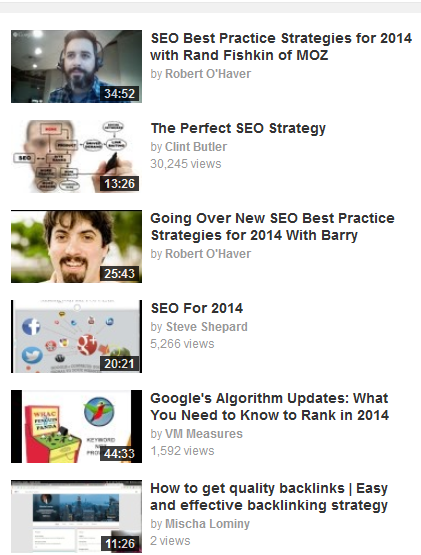
This infographic by Tag SEO sums them up quite nicely:
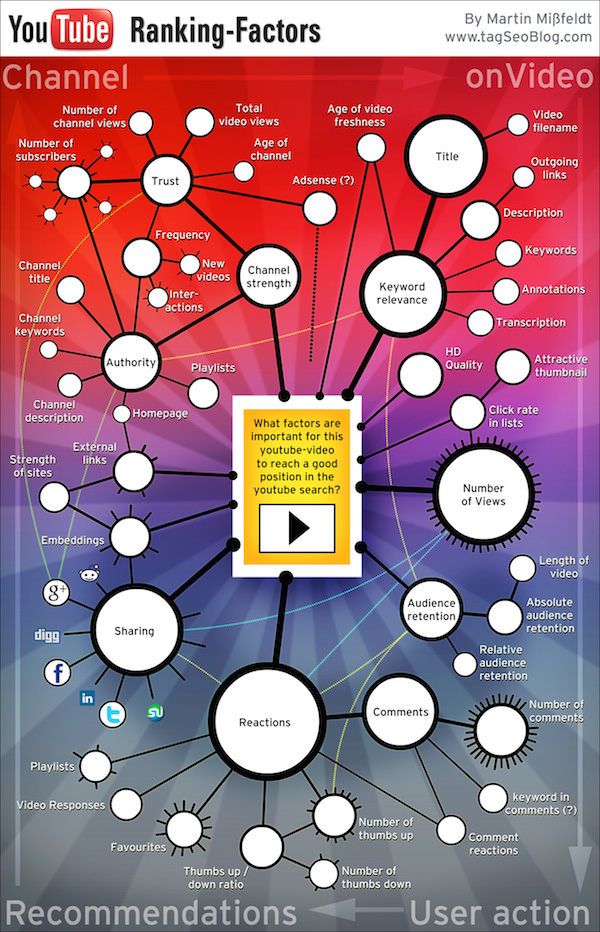
I know that’s a lot of information to process, so let me give you the Cliff’s Notes of the most important signals that YouTube uses:
- Title tag information
- Audience retention
- Keywords in description tag
- Tags
- Video length
- Number of subscribers after watching
- Comments
- Likes and dislikes
With that, it’s time to show you five ways that you can leverage these signals to get more traffic to your videos…and ultimately to your site.
1. Write Super-Long Video Descriptions
Remember that YouTube and Google can’t watch or listen to your video (yet).
That means that they heavily lean on the text surrounding the video to understand your video’s topic. That’s why it pains me to see extremely brief video descriptions like this:
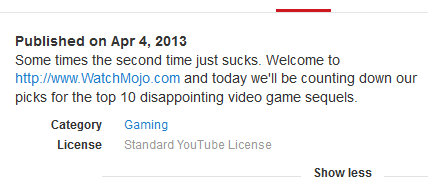
Why is this such a crime?
Well, the more YouTube knows about your video, the more confidently it can rank it for your target keyword.
But more importantly, YouTube uses keywords in the description to rank you for super-long tail keywords.
For example, I published a video on YouTube a few months back called “SEO Strategy 2014: How to Rank in Google Today.” My description for that video is a hefty 291 words. Almost an entire blog post, really.
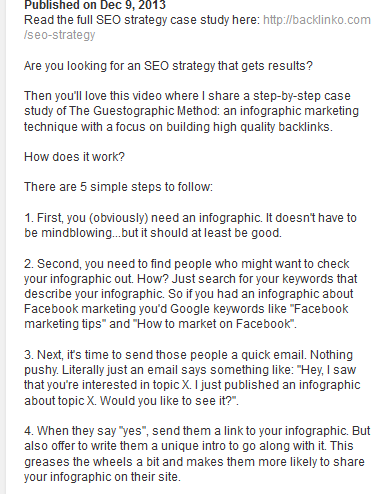
That long description – along with some other techniques I’ll show you later – helped the video rank quickly for it’s target keyword, “SEO strategy” (currently number three in YouTube).
But it’s also ranking for quite a few long tail keywords, like “infographic seo strategy” (number one), because the keyword-rich description includes words like “infographic” and “seo strategy”:

Bottom line: Make sure your video descriptions are at least 200 words.
2. Optimize Around “Video Keywords”
Ranking in YouTube is great, but ranking your video in YouTube and Google is even better.
Although Google gives YouTube videos an inherent edge in the SERPs, that’s only true for certain keywords.
These keywords are called “Video Keywords” because they tend to have video results on Google’s first page.
For example, any keyword that includes “cute cats” will almost always have a few video results:
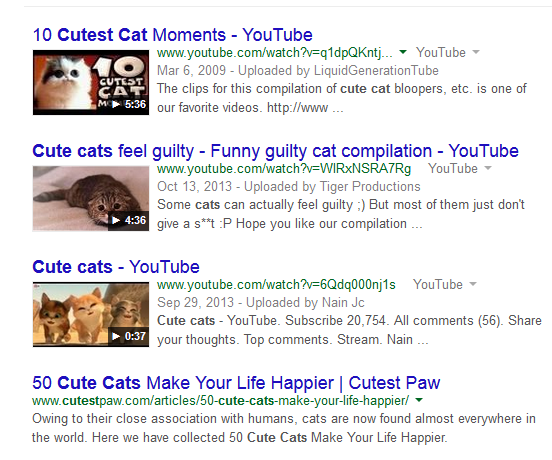
This makes total sense if you think about it.
Someone searching for “cute cats” doesn’t want to read an article like, “10 reasons cats are so darn cute.” They want to see cute cats playing, eating, and sleeping!
On the other hand, someone searching for “ankle sprain” wants to read about symptoms and treatments. Google knows this and shows those searchers a block of 10 text articles:
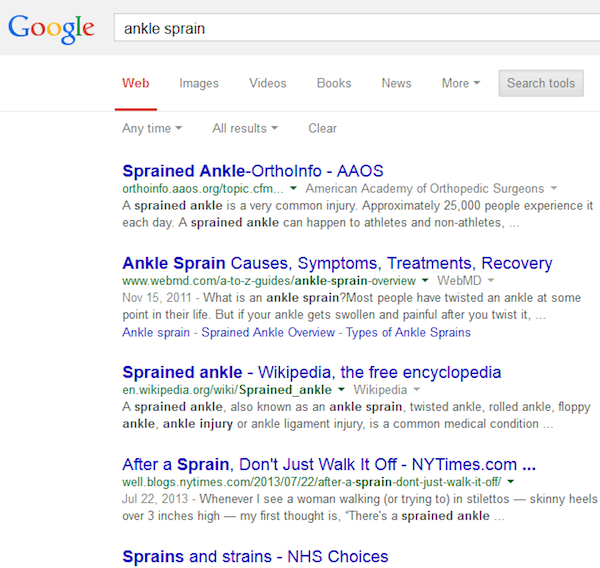
Bottom line: Before deciding on a keyword for your video, check to see if there are video results on the first page. If so, that’s a keyword you should strongly consider because you can potentially get your video ranked in Google and YouTube.
3. Get More Video Views From Online Communities
Online communities like Quora and LinkedIn groups are fantastic places to funnel traffic from.
The thing is, most communities don’t take too kindly to someone dropping links to their content all over the place.
But they’re usually open to people sharing helpful YouTube videos, like yours!
Because the number and quality of your video views is one of the most important YouTube ranking factors, getting views from targeted communities works wonders.
Just find a question in the community that your video could help answer. Then provide some value and suggest that people watch your video if they want more information:
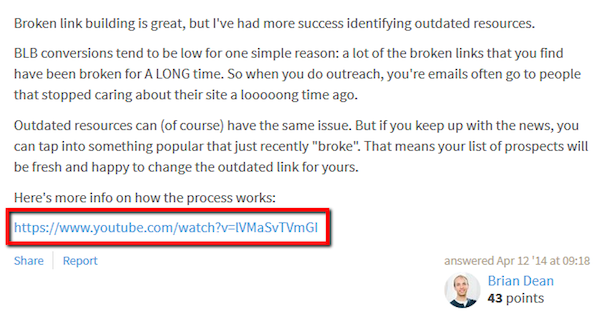
Bottom line: Share your video liberally on online communities. This will hook your video up with the type of quality, high-retention views that YouTube likes to see.
4. Encourage Subscribing and Linking
Because YouTube’s algorithm doesn’t use backlinks, it puts A LOT of weight on user experience signals. If people enjoy watching your video, expect it to crush it in YouTube search.
Subscribing and liking are two of the most important user experience signals that YouTube uses.
When someone likes your video enough to subscribe after watching it, it sends a strong message to YouTube that you have a killer video on your hands.
Likes are much less important, but they still count.
You can ramp up both of these user experience signals by asking.
At the end of your video, give people a strong call to action that encourages them to subscribe.
Marie Forleo – a master of YouTube marketing – asks people to subscribe at the end of every video:
(Skip at 4:55 to see how it’s done)
And I’m confident that her gentle push has contributed to her multiple first page YouTube rankings and 93,000 subscribers.
Bottom line: Ask people to like, comment, and subscribe in every single video.
5. Create Keyword-Rich Playlists
Don’t leave your YouTube channel an unorganized mess.
One of the easiest ways to get more YouTube search traffic to your videos is to organize your videos into playlists.
A keyword-rich playlist gives YouTube deeper information about your video’s topic. And like we saw with your description, more text-based content=more views.
For example, FitnessBlender, which gets more than 100,000 views on every video, has their channel organized neatly into keyword-rich categories:
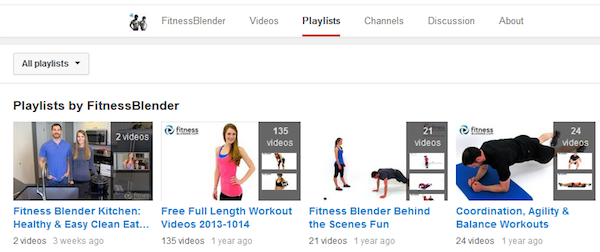
Bottom line: Once you have 10 videos in your YouTube channel, organize them into tightly themed playlists.
![]()
Twitter Canada MD Kirstine Stewart to Keynote Toronto
ClickZ Live Toronto (May 14-16) is a new event addressing the rapidly changing landscape that digital marketers face. The agenda focuses on customer engagement and attaining maximum ROI through online marketing efforts across paid, owned earned media. Register now and save!
